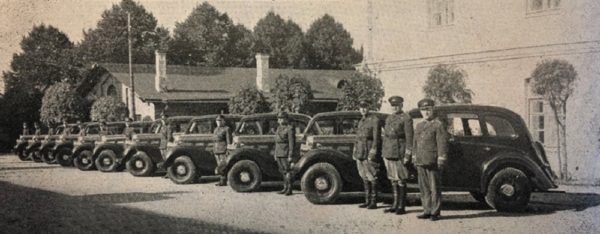
This fleet of Morris Twenty-Five cars, captioned as ‘fixed-head saloons’, was supplied by Messrs. J. Puhk & Pojad of Tallinn to the Esthonian [sic] War Office. The picture appeared in the December 1937 issue of The Morris Owner.
This model, the largest of a range otherwise known as the Morris Big Six, was produced by Morris from 1935 to 1939. The first models are sometimes referred to as the Big Six Series II, and the last Morris Twenty-Five, after upgrading to an overhead-valve engine, as the Big Six Series III. They were the successors to the Morris Oxford Six range: Morris Sixteen, Morris Twenty and the original Morris Isis (which would retrospectively be considered as the Big Six Series I).
These were the largest Morris cars, produced with 4-door saloon and, optionally for some models, 2-door coupé bodies.
Entrepreneur Jaak Puhk, originally from Viljandi, played an important role in Estonian history. He rose to prominence as a windmill owner, grain merchant and industrialist. In addition to his Estonian businesses, he was also involved with forestry and woodworking enterprises in Riga at the beginning of the 20th century.
Jaak Puhk owned a number of businesses; in addition, he was a supporter of the Republic of Estonia. For example, the Puhk family bought the young republic its embassies in London and Berlin. The Puhk family supported the Estonian Government, later participating in public procurement.
The best-known company owned by the Puhk family was the public limited company Kaubamaja J. Puhk & Pojad, in which Jaak and his five sons were equal shareholders. In 1923 the Puhk family acquired a majority holding in metals processor Ilmarine, and in 1924 they built a large mill near the Port of Tallinn. In 1929 they started an automotive business, representing Chevrolet and other American and English car brands (one of these clearly being Morris), and they were the sole representative of Dunlop tyres. During the Soviet occupation the Puhk family’s businesses were requisitioned and three of Jaak’s five sons died in Russian prisons.
Photograph courtesy of the Richard Roberts Archive







Leave a Comment